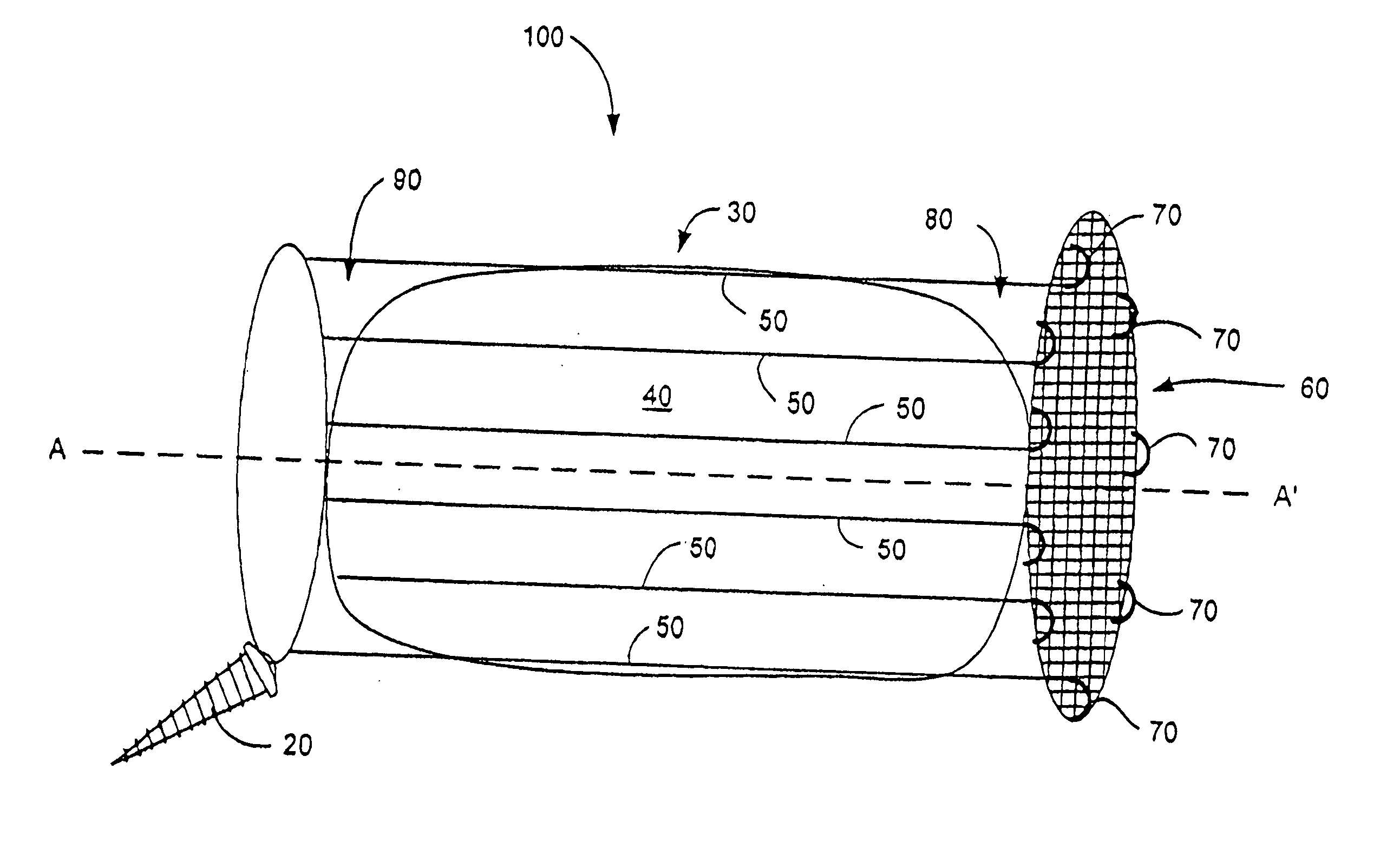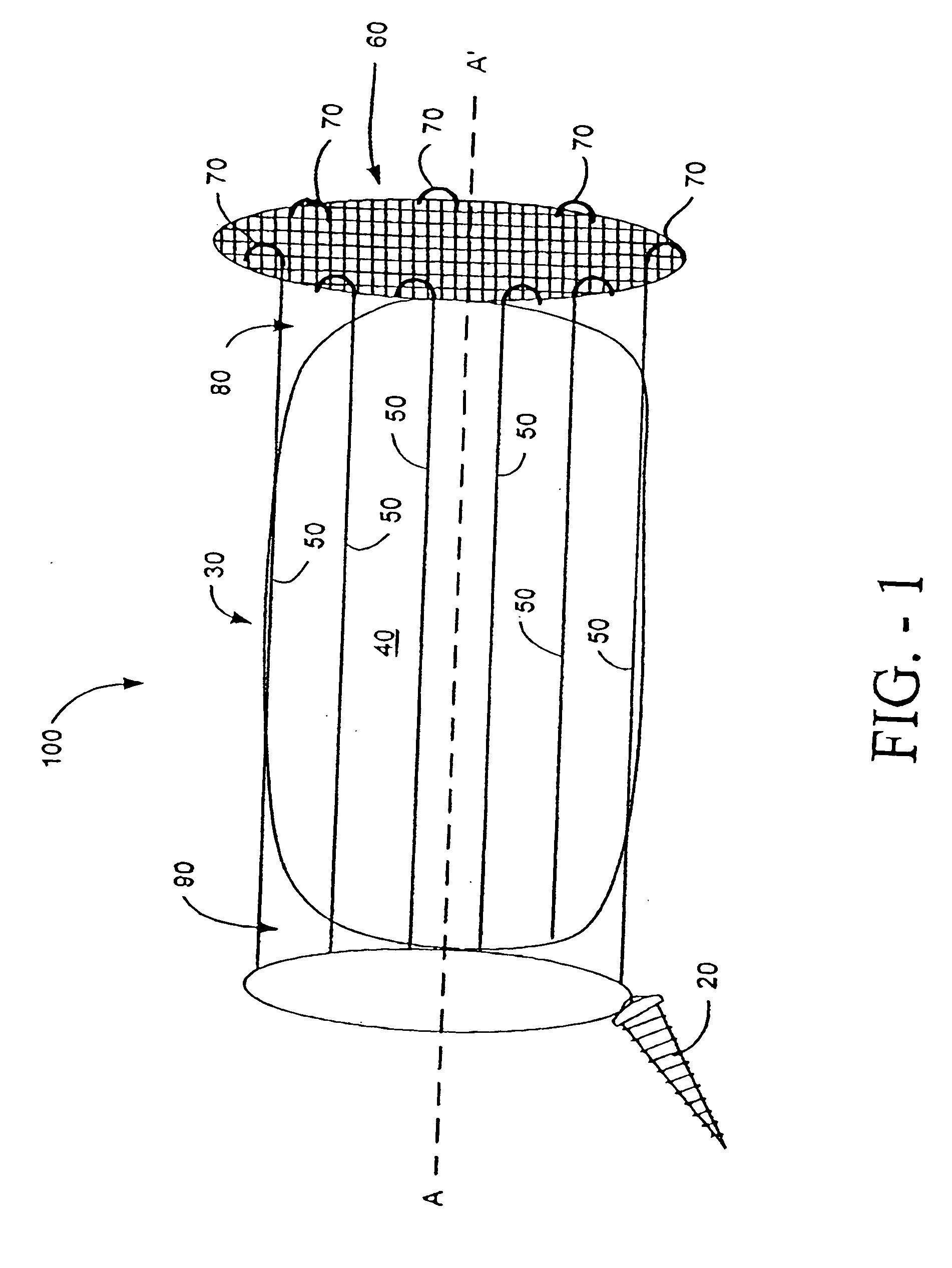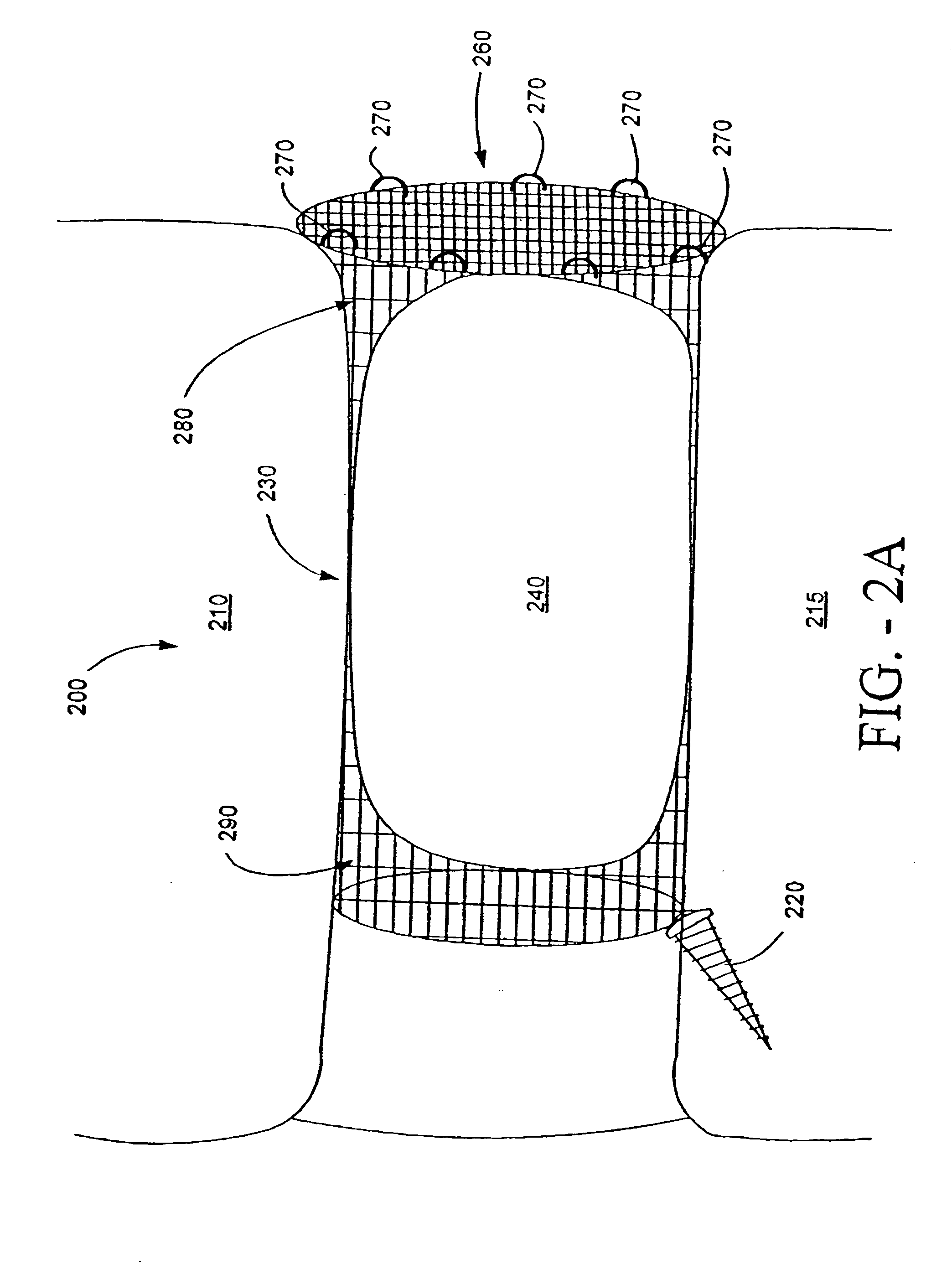Disk repair structures for positioning disk repair material
a technology for positioning disks and repair structures, which is applied in the field of prosthetic vertebral disk repair implants and methods, can solve the problems of leg pain, and loss of muscle control, and causing injury or disease to the spinal disk, and reducing the height of the nucleus
- Summary
- Abstract
- Description
- Claims
- Application Information
AI Technical Summary
Problems solved by technology
Method used
Image
Examples
embodiment
of FIG. 1
[0037] One preferred embodiment 100 of a prosthetic intervertebral spinal implant for repairing an intervertebral disk is shown in FIG. 1. In this embodiment, the implant 100 comprises a flexible wire structure 30 that is substantially cylindrical and has an interior hollow space 90. The flexible wire structure 30 further has a longitudinal axis, labeled here as A-A′. The plurality of wires 50 comprising the flexible wire structure 30 can have various configurations. For example, in FIG. 1, the plurality of wires 50 runs substantially parallel to the longitudinal axis A-A′. Other configurations also within the scope of this disclosure are depicted in FIGS. 2A, 2B, AND 3. The plurality of wires 50 can be made of a flexible biocompatible metal such as nitinol, aluminum, titanium, or stainless steel.
[0038] The prosthetic intervertebral spinal implant 100 further comprises an anchoring means 20, connected with the flexible wire structure 30 at a first end of the longitudinal a...
PUM
| Property | Measurement | Unit |
|---|---|---|
| Structure | aaaaa | aaaaa |
| Flexibility | aaaaa | aaaaa |
| Height | aaaaa | aaaaa |
Abstract
Description
Claims
Application Information
 Login to View More
Login to View More - R&D
- Intellectual Property
- Life Sciences
- Materials
- Tech Scout
- Unparalleled Data Quality
- Higher Quality Content
- 60% Fewer Hallucinations
Browse by: Latest US Patents, China's latest patents, Technical Efficacy Thesaurus, Application Domain, Technology Topic, Popular Technical Reports.
© 2025 PatSnap. All rights reserved.Legal|Privacy policy|Modern Slavery Act Transparency Statement|Sitemap|About US| Contact US: help@patsnap.com



